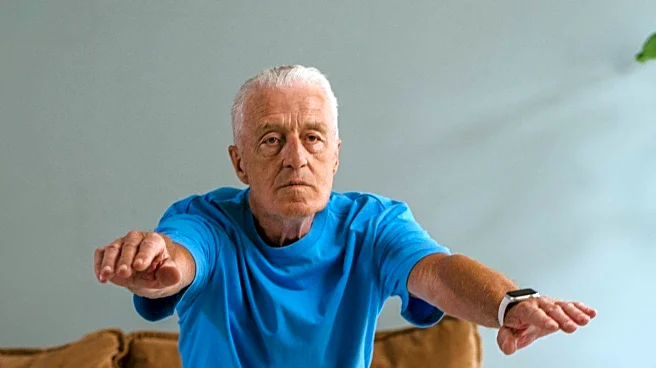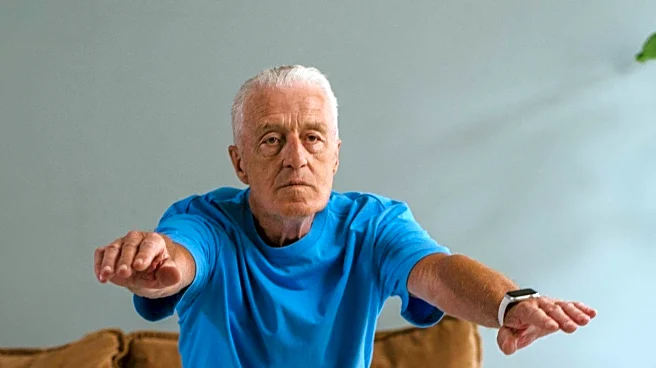What is the story about?
What's Happening?
Fitness experts have identified key exercises that can help older adults maintain strength, balance, and energy as they age. These exercises include moderate cardio, light strength training, and balance-improving activities. The Centers for Disease Control and Prevention (CDC) recommends at least 150 minutes of moderate aerobic activity or 75 minutes of vigorous activity weekly, along with two days of strength training. Activities like walking, water exercises, and yoga are highlighted as beneficial. The focus is on maintaining muscle mass and reducing the risk of diseases such as Type 2 diabetes, heart disease, and dementia.
Why It's Important?
As the population ages, maintaining physical health becomes crucial for independence and quality of life. Regular exercise can significantly reduce the risk of chronic diseases and improve mental health. By promoting specific exercises, older adults can enhance their mobility, reduce the risk of falls, and maintain their ability to perform daily activities. This approach not only supports physical health but also contributes to social well-being, as many exercise programs offer opportunities for social interaction.
What's Next?
Older adults are encouraged to incorporate these exercises into their routines, with guidance from healthcare providers to ensure safety. Programs like SilverSneakers, which are often covered by insurance, provide structured environments for older adults to engage in physical activity. As awareness of the benefits of exercise grows, more tailored programs may emerge, focusing on individual needs and capabilities.
Beyond the Headlines
The emphasis on exercise for older adults reflects a broader cultural shift towards proactive health management. By debunking myths about exercise safety in older age, there is potential for increased participation in physical activities, leading to healthier aging populations. This shift could also influence public health policies, encouraging more community-based exercise programs and resources for older adults.
AI Generated Content
Do you find this article useful?













